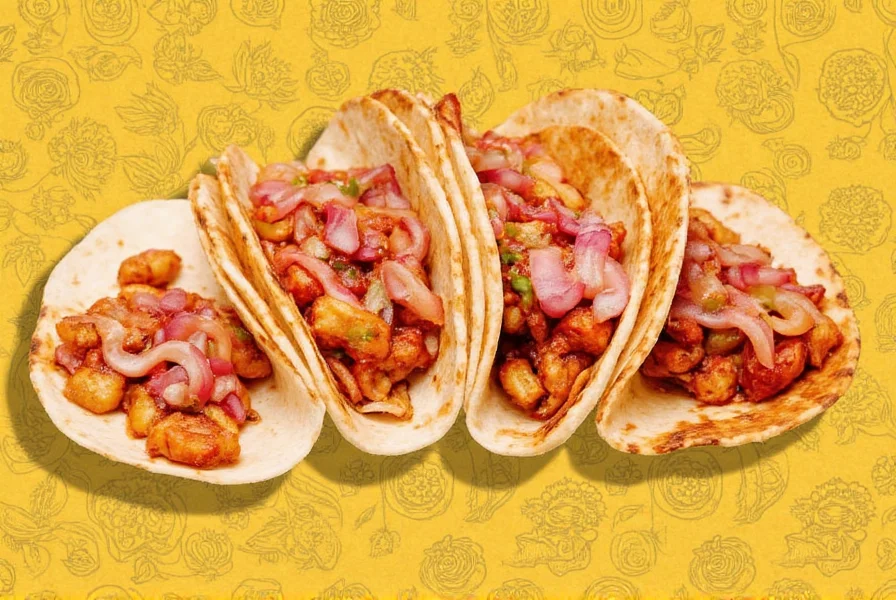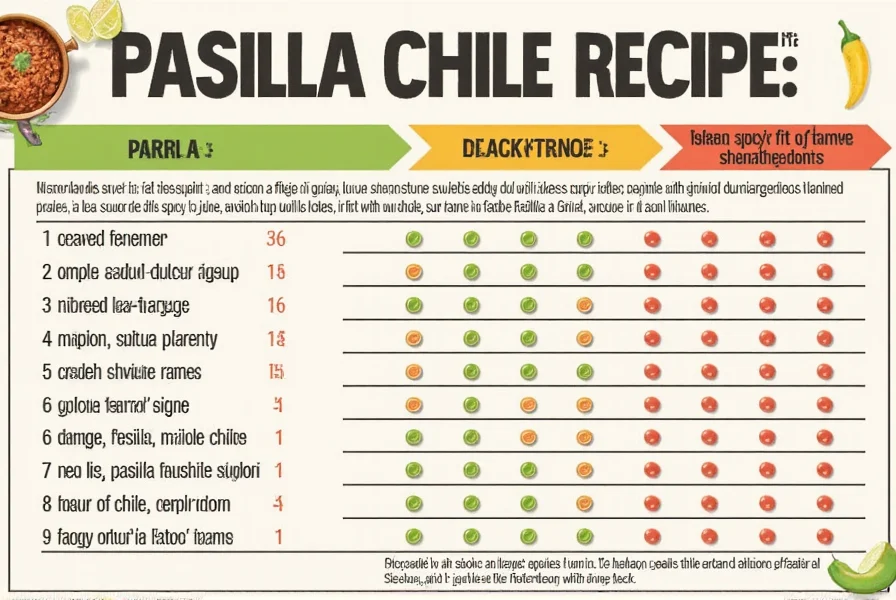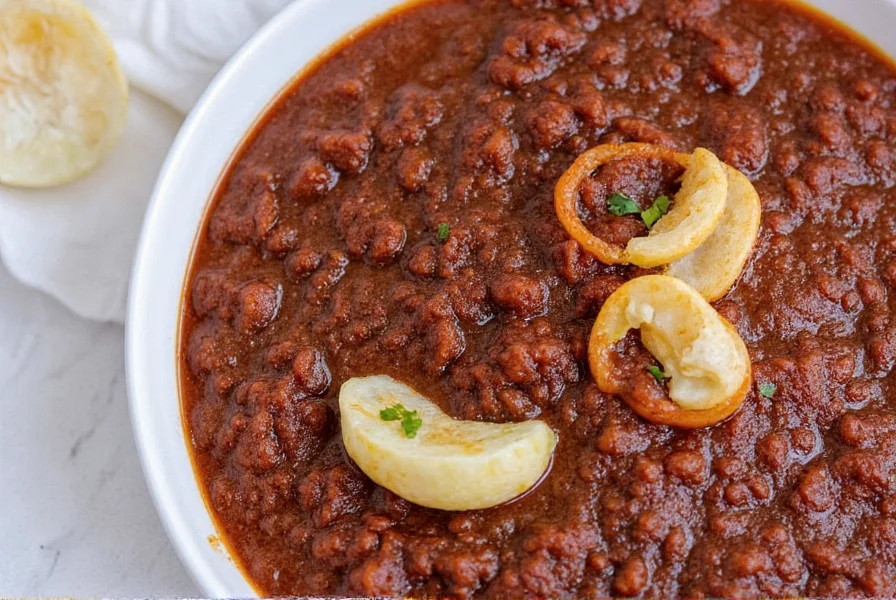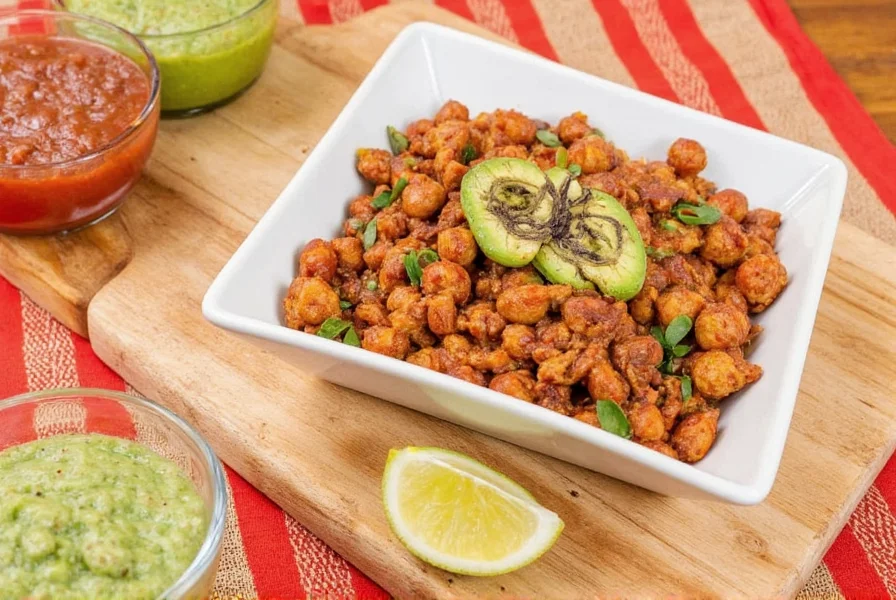What to Use When You Need a Pasilla Chile Substitute
When your recipe calls for pasilla chiles but you can't find them, you need reliable alternatives that match the flavor profile and heat level. Pasilla chiles (dried chilaca peppers) have a mild heat (1,000-2,500 SHU) with earthy, dark fruit, coffee, and licorice notes. They're essential in traditional Mexican dishes like mole sauces, but many home cooks struggle to find them.

This guide provides the best pasilla chile substitutes based on heat level, flavor similarity, and practical use in cooking. Whether you need a direct replacement or want to experiment with new flavors, we've got you covered.
What Is a Pasilla Chile?
The pasilla chile is the dried form of the chilaca pepper. It's not to be confused with the poblano pepper (which becomes ancho when dried). Pasillas have a distinctive blackish-green color when dried, mild heat (1,000-2,500 SHU), and complex flavor notes including dark fruit, coffee, and licorice.
In authentic Mexican cuisine, pasilla chiles are commonly used in mole sauces, where they provide depth and complexity alongside other dried peppers like ancho and mulato. Understanding these flavor characteristics is key to finding the right substitute.
Why You Might Need a Substitute
- Pasilla chiles are less commonly available than other dried peppers in many regions
- They're often out of season or hard to find in regular grocery stores
- Some cooks need milder or spicier alternatives based on personal preference
- You may want to experiment with different flavor profiles in your recipes
- When you need to substitute fresh peppers for dried ones for convenience
Top 10 Pasilla Chile Substitutes
Here are the best pasilla chile substitutes ranked by how closely they match the flavor profile and heat level:
- Ancho Chile - Mild (1,000-1,500 SHU), sweet, raisin-like flavor; closest match for most recipes
- Mulato Chile - Mild (1,000-2,500 SHU), chocolate and tobacco notes; great for mole sauces
- Guajillo Chile - Medium (2,500-5,000 SHU), bright berry and tea-like notes; slightly hotter but similar complexity
- Poblano Pepper (Fresh) - Mild (1,000-2,000 SHU), earthy and vegetal; the fresh version of the pepper that becomes ancho when dried
- New Mexico Chile - Mild to medium (1,000-5,000 SHU), earthy and nutty; versatile for sauces and stews
- Pasilla de Oaxaca - Medium (1,500-3,000 SHU), deeper and more intense than standard pasilla
- California Wonder Bell Pepper - Very mild (0-500 SHU), sweet and crisp; good for texture but lacks heat
- Chipotle Chile (Mild Use) - Medium to hot (2,500-8,000 SHU), smoky; use sparingly for depth
- Shishito Pepper (Roasted) - Very mild (100-1,000 SHU), grassy and buttery; works well for roasted applications
- Pequín Chile - Very hot (30,000-60,000 SHU), fiery and herbal; only for when you want intense heat

Pasilla Chile Substitute Comparison Table
Use this quick-reference table to pick the right substitute based on your specific needs:
| Chile Type | Heat Level (SHU) | Flavor Notes | Best For |
|---|---|---|---|
| Ancho | 1,000-1,500 | Sweet, raisiny, smoky | Mole, sauces, soups |
| Mulato | 1,000-2,500 | Chocolate, licorice, tobacco | Complex sauces, moles |
| Poblano (Fresh) | 1,000-2,000 | Earthy, green, vegetal | Stuffed peppers, tacos |
| Guajillo | 2,500-5,000 | Berry, tea, citrus | Marinades, salsas |
| New Mexico | 1,000-5,000 | Dry, earthy, nutty | Red sauces, stews |
| Pasilla de Oaxaca | 1,500-3,000 | Deep, fruity, more intense | Regional Oaxacan dishes |
| California Wonder | 0-500 | Sweet, crisp, bell pepper | Casual cooking, roasting |
| Chipotle (Powder) | 2,500-8,000 | Smoky, leathery | Barbecue rubs, marinades |
| Shishito | 100-1,000 | Grassy, buttery | Japanese-style grilled snacks |
| Pequín | 30,000-60,000 | Fiery, herbal, citrusy | Hot sauces, garnishes |
How to Choose the Right Pasilla Chile Substitute
When selecting a substitute for pasilla chile, consider these key factors:
1. Heat Level
If you're sensitive to spice or cooking for a crowd, choose mild options like ancho (1,000-1,500 SHU) or California Wonder (0-500 SHU). For moderate heat, try mulato or New Mexico chiles.
2. Flavor Profile
- For sweetness: Ancho, Mulato
- For earthiness: Poblano, New Mexico
- For smokiness: Chipotle powder
- For fruitiness: Guajillo, Pequín
3. Cooking Method
- Stuffed dishes: Fresh poblanos
- Sauces: Dried anchos, guajillos, mulatos
- Roasting: Shishitos, poblanos
- Spicy kicks: Pequín, chipotles
4. Availability
Ancho and fresh poblanos are widely available in most supermarkets. Mulato, pasilla de Oaxaca, and guajillo may require specialty stores or online ordering. For quick substitutions, ancho is the most accessible option.
Pro Tips for Using Pasilla Chile Substitutes
Maximize flavor with these cooking techniques:
- Toasting first: Lightly toast dried chiles in a dry skillet before rehydrating to enhance flavor complexity
- Rehydrating wisely: Soak in warm water or broth for 20-30 minutes until soft; save the soaking liquid for added flavor
- Don't overdo it: Especially with hotter alternatives like chipotle or pequín. Start with small amounts and adjust as needed
- Pair with aromatics: Onions, garlic, cumin, and cinnamon help balance and enhance chile flavors
- Experiment freely: Try mixing two or three chiles for layered complexity—like ancho + guajillo + mulato for a killer mole base
No Pasilla? No Problem!
Whether you're missing pasilla chiles at the last minute or simply curious about alternatives, there's no reason to compromise on flavor. With the right substitute, your mole, sauce, or stew can still sing with authenticity and richness.

So go ahead, experiment with different chiles, mix and match, and discover new flavor combinations. After all, cooking is about creativity—and now you have 10 solid backup plans that maintain the essence of your dish.
Frequently Asked Questions About Pasilla Chile Substitutes
What is the closest substitute for pasilla chile?
The ancho chile is generally considered the closest substitute for pasilla chile. Both have mild heat levels and similar earthy, sweet flavor profiles. Anchos offer a slightly sweeter, raisin-like flavor while maintaining the complexity needed in dishes like mole sauces. If you're making traditional Mexican recipes, ancho is your best one-to-one replacement.
Can I substitute fresh poblano peppers for dried pasilla chiles?
Yes, fresh poblano peppers are actually the fresh version of what becomes ancho chiles when dried, not pasilla. Pasilla comes from the chilaca pepper. For best results, roast and dry your fresh poblanos first, or use about 3-4 fresh poblanos to equal the flavor of 1 dried pasilla in recipes.
How do I adjust recipes when substituting guajillo for pasilla chile?
Guajillo chiles are slightly hotter (2,500-5,000 SHU) compared to pasilla (1,000-2,500 SHU) and have brighter, more citrusy notes. When substituting, use about 25% fewer guajillos than pasillas called for in your recipe. Also, consider balancing the brighter flavor with a touch more chocolate or cinnamon if making mole, as guajillo lacks pasilla's earthy depth.
What's the difference between pasilla and mulato chiles?
Both are dried peppers used in Mexican cuisine, but they come from different pepper varieties. Pasilla is the dried form of the chilaca pepper, while mulato is the dried form of the poblano pepper (same fresh pepper as ancho, but harvested later when darker). Mulatos are slightly sweeter with pronounced chocolate and tobacco notes, while pasillas have more earthy, licorice-like flavors. Mulatos are often used alongside pasillas in complex moles.
Can I use chipotle powder as a pasilla chile substitute?
Yes, but use it sparingly. Chipotle powder is significantly hotter (2,500-8,000 SHU) and has a dominant smoky flavor that pasilla lacks. For every pasilla chile called for, use just 1/4 to 1/2 teaspoon of chipotle powder, and consider adding a sweet element like a bit of tomato or a pinch of sugar to balance the smokiness. It works best in barbecue-inspired dishes rather than traditional moles.
What's the best pasilla chile substitute for mole sauce?
For authentic mole sauce, the best approach is a combination of ancho and mulato chiles. Use a 2:1 ratio of ancho to mulato to mimic pasilla's complex flavor profile. The ancho provides the sweet, raisin-like base while the mulato adds the deeper chocolate and tobacco notes that are characteristic of pasilla in mole recipes.











 浙公网安备
33010002000092号
浙公网安备
33010002000092号 浙B2-20120091-4
浙B2-20120091-4